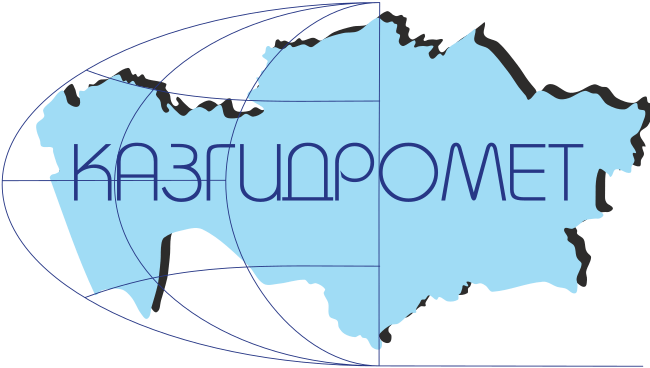CHANGES IN SPATIAL DISTRIBUTION OF SNOW DEPOSIT DURING 2001…2022 IN EAST KAZAKHSTAN
DOI:
https://doi.org/10.54668/2789-6323-2023-108-1-35-41Keywords:
snow cover, snow water equivalent anomaly, distribution of snow deposits in the territory, long-term changes, climate changeAbstract
In recent years, regional satellite products that provide high spatial and temporal resolution for describing snow cover parameters have become publicly available. These products offer the most accurate estimates for steppe areas, where interference from forest cover is minimal. Regular data grids provide new opportunities to analyze the spatial characteristics of snow coverage in territories that previously could not be obtained from meteorological station data. This study investigates the long-term changes in the large-scale spatial distribution of water reserves in the snow cover in the Abai and East Kazakhstan regions. These characteristics of the snow cover can also experience transformations, which are driven by climate change. The
Abai and East Kazakhstan regions of Kazakhstan, with a total area of about 0.27 million km2, are located in the center of the Eurasian continent. This paper describes the transformation of the large-scale spatial distribution of the snow cover on the analyzed territory from 2001 to 2022. The Snow Water Equivalent Anomaly (SWEA) product on March 1 was used as the initial data, which has a daily update and a resolution of 1 km and is available on the USGS FEWS NET portal. It was found that the large-scale spatial distribution of positive anomalies of the water equivalent of the snow cover on the analyzed territory varied between 2001…2022, with an increase in situations characterized by a decrease in the typical size of zones with positive anomalies of water reserves in the snow. This effect is partly synchronized with similar phenomena described for large mountainous countries of Eurasia, where the average area of clusters forming an area with a positive anomaly of water reserves
in snow decreased tenfold from 2001 to 2019, from approximately 10000 km2 to 1000 km2.
References
Terekhov A.G., Pak I.T., Dolgikh S.A. Satellite observations of the anomalous spring flood at the lower reach of the Ayaguz River in 2016, Sovremennye problemy distantsionnogo zondirovaniya Zemli iz kosmosa, 2016, Vol. 13, No. 4, pp.273–276, DOI: 10.21046/2070-7401-2016-13-4-273-276.
Terekhov A.G., Abayev N.N., Yunicheva N.R. Anomalous snowy regime at 2019 year and long-term trends in snow depth in Kazakhstan, Sovremennye problemy distantsionnogo zondirovaniya Zemli iz kosmosa, 2019, Vol. 16, No. 5, pp. 351–355, DOI: 10.21046/2070-7401-2019-16-5-351-355.
Terekhov A.G., Ivkina N.I., Abayev N.N., Galayeva A.V., Yeltay A.G. (2020а) Streamflow response of the Ural River to basin snow depth changes during 2001–2019, Sovremennye problemy distantsionnogo zondirovaniya Zemli iz kosmosa, 2020, Vol.17, No.5, pp.181-190, DOI: 10.21046/2070-7401-2020-17-5-181-190.
Terekhov A.G., Ivkina N.I., Yunicheva N.R., Vitkovskaya I.S., Yeltay A.G. Snow cover changes of the Kazakhstan dry steppes and semi-deserts on the basis of River Emba basin studies, Sovremennye problemy distantsionnogo zondirovaniya Zemli iz kosmosa, 2020, Vol.17, No. 2, pp. 101-113, DOI: 10.21046/2070-7401-2020-17-2-101-113.
Terekhov A.G., Abayev N.N., Vitkovskaya I.S., Pak A.A., Yegemberdyeva Z.M. Links between the vegetation state over Tien-Shan mountains and North Atlantic Oscillation indices of the upcoming season, Sovremennye problemy distantsionnogo zondirovaniya Zemli iz kosmosa, 2020, Vol. 17, No.2, pp. 275-281, DOI: 10.21046/2070-7401-2020-17-2-275-281.
Terekhov A.G., Ivkina N.I., Yunicheva N.R., Vitkovskaya I.S., Yeltay A.G. Snow cover changes of the Kazakhstan dry steppes and semi-deserts on the basis of River Emba basin studies, Sovremennye problemy distantsionnogo zondirovaniya Zemli iz kosmosa, 2020, Vol.17, No. 2, pp. 101-113, DOI: 10.21046/2070-7401-2020-17-2-101-113.
Bormann K.J., Brown R.D., Derksen C., Painter T.H. Estimating snow-cover trends from space// Nature Clim. Change. 2018, V.8, P. 924-928, DOI:10.1038/s41558-018-0318-3.
Bulygina O.N., Groisman P.Ya., Razuvaev V.N., Korshunova N.N. Changes in snow cover characteristics over Northern Eurasia since 1966// Environ. Res. Lett. 2011, V.6, No. 045204, DOI: 10.1088/1748-9326/6/4/045204.
Bulygina O.N., Razuvaev V.N., Korshunova N.N. Changes in snow cover over Northern Eurasia in the last decades// Environ. Res. Lett. 2009, V.4, No. 045026, DOI: 10.1088/1748-9326/4/4/045026.
Dye D. G. Variability and trends in the annual snow‐cover cycle in Northern Hemisphere land areas, 1972–2000// Hydr. Proc. 2002, V.6, Iss.15, P. 3065-3077, DOI: 10.1002/hyp.1089.
Kitaev L., Førland E., Razuvaev V., Tveito E.O., Krueger O. Distribution of snow cover over Northern Eurasia// Hydr. Res. 2005, V.36, No 4-5, P. 311-319, DOI: 10.2166/nh.2005.0024.





